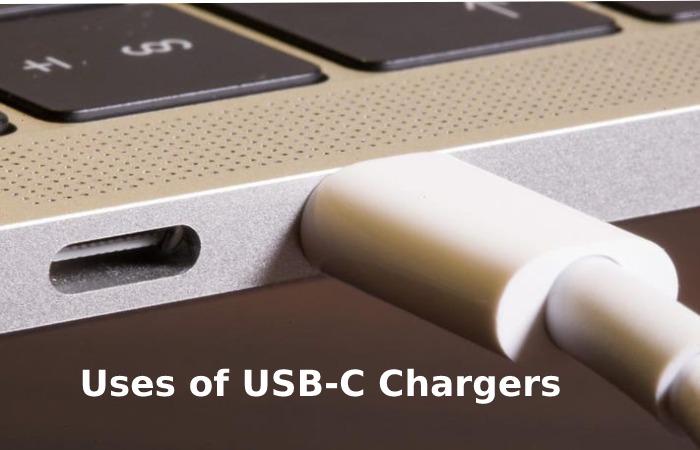The USB-C Charger or type C is a type of connector with a small format and which used to connect cables to USB sticks of different standards. At this point, it emphasizes that type C is only a type of connector, so it does not directly influence the transmission speeds or the technology behind it.
The connector we all know is Type A, the lifelong standard and large dimensions that almost all USB sticks or cables connect to the computer user. However, it is not the only one out there since you also have TYPE B, which uses peripherals such as printers or scanners, often connecting them to the current and providing them with power.
Then two other types are the old Mini USB used years ago in cameras and mobile phones. Finally, a more recent Micro USB using in most smartphones until the recent arrival of Type C. So, we can say that USB Type C is the successor to Micro USB and is standardized to use in different types of technologies.
The USB Type C connector characterizes by its small size and, above all, because it is a fully reversible connector. That means no more connecting something to the TV or PC and realizing that you are trying to connect it backward. Instead, this connector works the same regardless of how you plug it in.
Table of Contents
Uses of USB-C Chargers

USB Type C supports various uses and different types of standards. For example, it can be the connector for the latest USB 3.1 standard or USB Power Delivery (USB PD). It is aIn addition, a connector for the popular
This connector can also use as video and audio output via HDMI, DisplayPort output, or analog video output (VGA), among others. And that’s where some of the mix-ups are because all of these technologies can use the Type C connector. But not all connectors in this form factor support all technologies.
Benefits of USB Type C Charger
- You are probably familiar with the term “USB.” If you have a PC, likely, you have ever used a USB memory connected to a printer, or you have heard this term with the charger of your Android device.
- USB has been around for a long time. It debuted in 1998, initially included for Windows 98 devices, and with Apple primarily to remove the classic keyboard and mouse ports on the iMac. We are almost 20 years on, and things have changed since then.
- USB 1.1 was capable of transferring data at 12mb/s. In those days, it was consider fast that a floppy could move at that speed.
- After some years on the market, it was during 2008 that USB 3.0 was launched. The most common today – with an average transfer speed of 400 megabytes per second.
Advantages and Disadvantages of USB-C Charger
It has taken USB.org no less than two years to bring this specification to life through multiple changes, experiments, and, above all, tests with industry leaders. Of course, we already knew the USB-C 2.0 version, but what has changed in this new 2.1?
First, let’s talk about what has not altered as such: the connector. The standard remains the same shape, size, and anchors, which means it will be fully backward compatible as with USB-A.
But saving this, the changes are already noticeable. In the first place, and as something physical, we will have at least two different pins: from A4 to A9 and from B4 to B9. Which now have the added peculiarity that they should not short circuit to the ground during the connection of the connector. It is crucial, as it is vital for power, power supply, and keeping compatibility with version 2.0 smooth.
The Future of USB-C Charger
A new version of USB is on the way, and there are rumors that it will be faster than previous generations and offer greater standardization. In addition, we can expect the arrival of USB4 shortly, starting with the release of laptops with the new port.
USB4 adds another layer of complexity to the USB protocol problem. But, there is still more to know about the new technology.
- USB4 will be available on USB-C ports.
- USB4 increases charging speed and power to match Thunderbolt 3, up to 100W.
- USB4 will require cables formatted for USB4 to enable its new features.
- USB4 will be backward and well-matched with USB 2.0.
We look forward to a day when USB-C becomes the primary port of choice, and others will fall by the wayside. In the future, USB4 and Thunderbolt are likely to be the standard.
Conclusion
Every day USB-C charger becomes more common in smartphones since large companies like Apple have chosen to integrate their use even in laptops. According to this trend, USB Type C could be a standard for a long time. So if you’re considering acquiring a team with this entry, going ahead is the best bet, and if not, maybe you’d think again.

![USB-C Charger – Uses, Benefits, and More [2023]](https://www.webcomputertech.com/wp-content/uploads/2022/09/USB-C-Charger-1200x675.jpg)